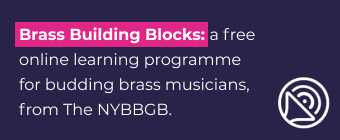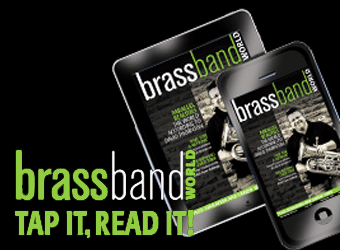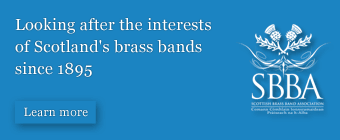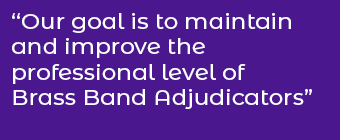Brass Bands England has published its full, sector support advice on the latest COVID-19 Pandemic guidelines from DCMS – effective from 14 August 2020
This is the advice, as published by BBE in full.
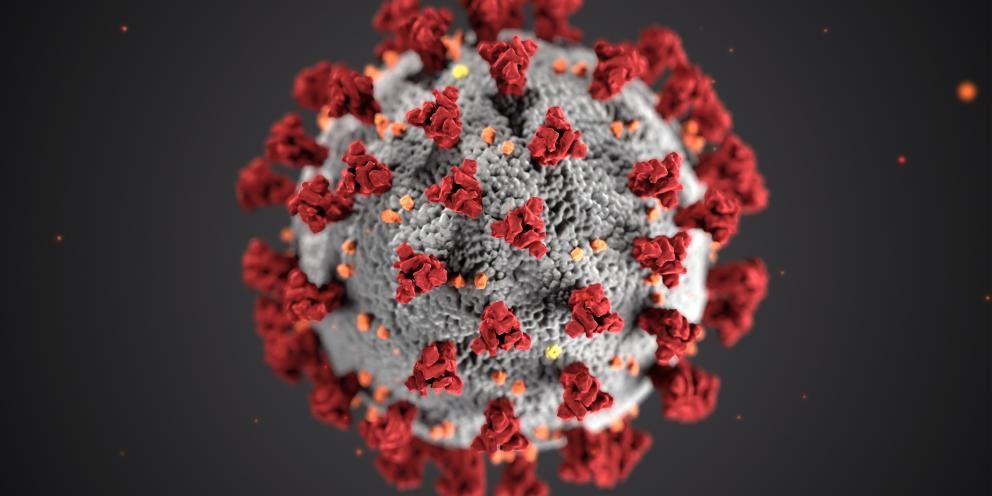
Introduction:
The Department for Digital, Culture, Media and Sport (DCMS) has updated the guidance for performing arts which has particular effect for brass bands.
In response to the scientific studies commissioned by the DCMS, and with additional reference to the research presented recently by Brass Bands England (BBE), it has now announced notable changes in the rules, with considerable implications for brass bands.
It states that non-professionals can now engage in brass and wind playing, as well as singing, but in line with the wider guidance. This change will allow groups of up to six players to again rehearse outdoors, or with members of two households playing together inside.
Bands constituted as charities or businesses, or which run venues, may now host larger groups provided they can meet Covid secure guidelines and social distancing requirements.
All activity will require a risk assessment to be in place for the activity, and groups of over six or two households must recognise that accountability for all actions lies with the registered business, charity or venue concerned.
It is important to remember that this guidance is there to support the resumption of activities, but all activity will need to be considered on its own merits taking into account specific situations and bands’ own members’ health and safety.
Organisers should familiarise themselves with the DCMS guidance and ensure that a proper risk assessment is available for all activity.
Summary of the DCMS guidance for amateur brass bands
Social distancing in rehearsals:
Studies have indicated that cumulative aerosol transmission from both those performing and attending are likely to create risk. This is still being researched in order to understand the situation fully.
Rehearsals should ensure the following is in place:
-
Continue to socially distance from those you do not live with and ensure that 2m distancing applies wherever possible.
-
Non-professionals are limited by rules on meeting people outside your home. This is currently 6 people playing outside from different households OR 2 households playing together inside or out
-
Non-professionals should not engage in activities that may lead to social distancing being compromised.
-
Observe social distancing at all times whilst playing.
-
Ensure that activity takes place outside wherever possible, including any performances.
-
Limit the duration of social interaction opportunities i.e. rehearsals or performances as far as possible.
-
Take steps to improve ventilation as far as possible and whenever possible, both through the use of mechanical systems and opening windows and doors.
-
Ensure a risk assessment process has been carried out for the activity.
-
Use back-to-back or side-to-side positioning (rather than face-to-face) whenever possible.
-
Consider using screens or barriers in addition to social distancing, including the use of face masks during non-playing time and bell covers.
-
All condensate should be collected in a towel or similar and collected and retained to be washed by the player.
Gathering in larger groups:
It is currently against the law for gatherings of more than 30 people to take place in private homes (including gardens and other outdoor spaces).
Businesses and venues following COVID-19 Secure guidelines CAN, however, now host larger groups.
This is also the case for events in public outdoor spaces that are organised by businesses, charitable or political organisations and public bodies, provided they take reasonable steps to mitigate the risk of transmission in line with COVID-19 Secure guidance and including completion of a risk assessment.
Any other gatherings in outdoor spaces must not be any larger than 30 people. If playing indoors, limiting the numbers to account for ventilation of the space and the ability to social distance.
More generally, you can continue to meet in larger groups if necessary for voluntary or charitable services, education or training. You can also meet in larger groups for community activities and support groups - which should be limited to no more than 30 people and must be subject to COVID-19 secure guidelines.
If taking part in activities with larger groups, you should take particular care to follow social distancing guidelines.
In addition to those guidelines, the following principles should be observed to ensure you meet people in a way that minimises the risk of spreading infection:
-
Limit the time you spend interacting with people from outside your household or support bubble to the activity in which you are partaking.
-
Limit the number of different activities in which you partake in succession to reduce the potential chain of transmission.
-
Group sizes should be limited to the minimum which allows the activity to take place.
-
Maintain high standards of hand hygiene.
-
You are also strongly encouraged to wear a face covering and bell covers in other enclosed public spaces where social distancing may be difficult and where you come into contact with people you do not normally meet.
If organising an activity, you should carry out a COVID-19 risk assessment to identify actions which could minimise the risk of transmission.
Employers have a legal responsibility to protect workers and others from risk to their health and safety.
In a band, your conductors and tutors, along with other freelance members, should be considered as employees in this particular respect.
Performances
The guidelines on performances are very detailed and anyone organising a performance should pay attention to the current guidance from the DCMS.
Limiting the number of people in the venue or on the premises, overall and in any particular congestion areas, for example doorways between outside and inside spaces to maintain social distancing.
Particular attention should be given to ventilation and sufficient circulation space especially around equipment and between groups and any classes and coaches or teachers.
Conducting a specific risk assessment for each premises or venue and the proposed activities to identify:
-
The likely numbers of people that will be in the venue or on the premises at different times of its use.
-
The number of people that can reasonably follow social distancing within the venue or premises, taking into account total space, equipment as well as likely constraints (toilets and washrooms) and pinch points.
-
The ventilation rates that can be applied to the premises or venue and whether this can be adjusted sufficiently to deliver a safe environment for all those due to attend at any time (performers, producers, support teams and audience combined).
-
Which activities can be undertaken and which spaces can be used with specific measures to ensure social distancing and maintain cleaning.
Enabling a booking system or other approaches to manage demand of spaces, so that no more than the desired number of people are in the building at any one time and records of those attending, including seating position, can be provided for contact tracing purposes in the event of a case of COVID-19 in a participant.
Managing occupancy levels and changeover by reducing class, rehearsal group or audience sizes and amending timetabling.
Allowing a sufficient break time between sessions or performances held to prevent waiting in groups.
Where possible, operating on a book-in-advance basis for any spaces available to hire, preferably online or over the phone.
Risk assessments should specifically consider the maximum capacity for a given performance, the ventilation that can be delivered for that capacity and the ability to manage audience behaviour to avoid compromising social distancing.
Reducing site, premises or venue capacity and limiting ticket sales to a volume which ensures social distancing can be maintained.
For performances or events where there is no ticketing, considering using other communications approaches, coupled with stewarding, to manage the numbers attending.
Free, open, unticketed and unfenced performances or events will need to demonstrate a reasonable approach to control numbers if too many people begin to arrive and to encourage social distancing, as well as fulfilling requirements to support contact tracing in the event of a subsequent case of COVID-19.
This might include:
-
Managing performance scheduling so that audiences for different performances are not using the site, premises or venue at the same time in a way that compromises adherence to social distancing, and to allow for adequate cleaning.
-
Reconfiguring entertainment spaces to enable the audience to be seated rather than standing. For example, repurposing ticketed standing areas as ticketed seating areas.
-
Due to the risk of transmission via droplets, venues with balconies should keep the front 2m of seats empty to mitigate risks of transmission.
-
Considering using available spaces outdoors for performances with a live audience in attendance.
-
Considering the expected interactions amongst audience members and making sure sufficient controls are in place to maintain social distancing, for example providing clear communication, demarcating spaces, using sufficient ushers.
-
Making sure risk assessments carefully consider worker safety, especially of those working closely with a large number of members of the public or audience.
-
Discouraging or avoiding gatherings such as performances or screenings that may encourage audience behaviours that increase transmission risk, for example crowding, clustering or physical contact outside of household groups or support bubbles.
-
Considering where crowding could take place such as at points of ingress and egress, car parking, handwashing and toilet facilities, waiting areas, bars and restaurants and areas in proximity to performance areas.
-
Considering the particular needs of disabled audiences when making adjustments to venues or premises, and communicating these appropriately before any performance as well as when in the venue or premises.
-
Consulting with relevant authorities and specialist advice to best evaluate impact, develop mitigating strategies and coordinate relevant external agencies if required.
Premises or locations which are COVID-19 Secure will be able to hold more than 30 people, subject to their own capacity limits, although any individual groups should not interact with anyone outside of the group they are attending the venue with - so in a group no larger than two households or six people if outdoors.
In particular, those operating venues or running events following COVID-19 secure guidelines should take additional steps to ensure the safety of the public and prevent large gatherings or mass events from taking place. Venues should take account of this guidance and the outdoor events guidance in organising outdoor performances.
Individual businesses or venues should consider the cumulative impact of many venues re-opening in a small
area. This means working with local authorities, neighbouring businesses and travel operators to assess this risk and applying additional mitigations.
These could include:
-
Further lowering capacity - even if it is possible to safely seat a number of people inside a venue, it may not be safe for them all to travel or enter that venue.
-
Staggering entry times with other venues and taking steps to avoid queues building up in surrounding areas.
-
Arranging one-way travel routes between transport hubs and venues.
-
Advising patrons to avoid particular forms of transport or routes and to avoid crowded areas when in transit to the venue.
When members of the public are attending performances, organisers should ensure that steps are taken to avoid audiences needing to unduly raise their voices to each other, such as shouting, chanting and singing along. This is because increased volume can increase aerosol transmission.
This includes, but is not limited to, discouraging singing along to music or cheering, refraining from playing music or broadcasts that may encourage shouting, including if played at a volume that makes normal conversation difficult, for example during performance intervals.
Organisers can ask performers to help encourage the audience to support the overall safety of the event. You should take similar steps to prevent close contact activities - such as communal dancing in audiences.
This is important to mitigate the potential for increased risk of transmission – particularly from droplets and aerosol transmission. This might include the use of bell covers while playing and facemasks when not playing.
Managing family groups who may wish to remain closer than the required social distance but who, in doing so, may encourage others to cluster in a similar manner. Communication is key to this.
People with symptoms of COVID-19, or who have been advised to self-isolate following contact with someone with symptoms of COVID-19, should be asked not to attend.
The expected interactions among participants occurring during the event and implementing sufficient controls to ensure social distancing is maintained.
Discouraging or avoiding activities or features that are likely to encourage audience behaviours increasing transmission risk, such as crowding, clustering, communal dancing and physical contact outside of household groups or support bubbles.
Social distancing while not playing (meetings, social gatherings etc.)
In all activity social distancing must be maintained. Currently the Government says this should be 2m.
To help maintain this distance you might need to use the following to help maintain distances:
-
Putting up signs to remind members and visitors of social distancing guidance.
-
Avoiding sharing equipment .
-
Using floor tape or paint to mark areas to help people keep to a 2m distance.
-
Arranging one-way traffic through the space if possible.
This can be reduced to 1m when 2m is not possible, but only with additional (and all possible) mitigating measures.
These mitigating measures include:
-
Considering whether an activity needs to continue for the band.
-
Keeping the activity time involved as short as possible.
-
Using screens or barriers to separate people from each other.
-
Avoid facing each other directly.
-
Staggering arrival and departure times.
-
Wearing a face mask.
-
Reducing the number of people each person has contact with by using fixed teams or partnering.
In addition, bands are advised to keep an accurate record of attendance, including arrival and departure times, and contact details for potential use in contact tracing.
Taking pictures of those attending at regular intervals on a mobile phone may also be useful in this respect.
Safeguarding measures must be respected at all times so these pictures should not be made public. If children or vulnerable adults are involved then photographic consent must be sought.
As activities begin to resume, please remember there are still considerable risks. Bands will need to be active in reducing these by modifying activities to look after members who may be particularly vulnerable.
We hope that your bands are still intact but, for those that may be struggling, we recently launched a fund to support organisations with specific problems relating to finance.
If you require assistance then please contact info@bbe.org.uk to find out how to apply to the Brass Band Emergency Fund.
BBE staff are available for advice on best practice in resumption of your band’s activities.
To speak to a member of staff please call 01226 771015.
Notes on this advice:
To clarify these changes the DCMS guidance on the changes to brass playing stated:
“Additional mitigations, such as extended social distancing, were previously required for singing, wind and brass given concerns that these were potentially higher risk activities.
DCMS commissioned further scientific studies to be carried out to develop the scientific evidence on these activities, which has allowed us to reconsider appropriate mitigations.
Both professionals and non-professionals can now engage in singing, wind and brass in line with this guidance. People should continue to socially distance from those they do not live with wherever possible and venues, performers and audiences matched to ensure 2m distancing applies wherever possible.
Social interactions should be limited to a group of no more than two households (indoors and out) or up to six people from different households (if outdoors).
However, these studies have also indicated that it is the cumulative aerosol transmission from both those performing in and attending events is likely to create risk.
We are continuing to develop more detailed understanding of how to mitigate this potential aggregate risk, but in that context, organisations should therefore consider:
-
Maintaining social distancing wherever possible. Non-professionals should not engage in activities that may lead to social distancing being compromised.
-
Ensuring activity takes place outside wherever possible, including performance
-
Limiting the number of performers as far as possible (with non-professionals being restricted by rules on meeting people outside your home
-
Limiting the number of audience members, noting that capacity should be maintained at a level that allows social distancing to be maintained
-
Limiting the duration of social interaction opportunities ie rehearsals or performances as far as possible
-
Taking steps to improve ventilation as far as possible and whenever possible, both through the use of mechanical systems and opening windows and doors
-
Taking steps to encourage audiences to support the overall safety of the event, including discouraging activities which can create aerosol (such as shouting, chanting and singing along), seating individuals rather than allowing them to stand (to help maintain social distancing) and the other mitigations outlined in this guidance
-
Continue to take the other vital steps outlined in this guidance, including preventing unwell people from attending, maintaining cleanliness, supporting contact tracing and other mitigating measures.
By considering and adopting these measures cumulatively, the overall risk of the event will be reduced.”
Guidance:
The DCMS guidance can be found at: https://www.gov.uk/guidance/working-safely-during- coronavirus-covid-19/performing-arts#arts-4-7
Further information on meeting people from outside your household: https://www.gov.uk/guidance/meeting-people-from-outside-your-household-from-4-july
In areas currently experiencing a local lockdown there may be additional restrictions in place that prevent activity so please ensure that these rules are checked and observed before others guidelines here.
This advice does not apply directly to anyone currently being shielded. They should continue to observe the latest specific Government advice and any direct contact with other band members should carefully reflect this.
Similarly, anyone currently showing known symptoms of COVID-19 or who may have been in recent contact with someone who has, or those belonging to vulnerable categories, should not yet take part in any group activity but should remain at home in isolation.
Scotland, Wales, Northern Ireland
It should be noted by BBE members in Scotland and Wales that regulations there differ from those in place in England. These should be observed carefully depending on the part of the UK in which those organisations are based.
Brass Bands England is maintaining contact with and taking advice from Arts Council England, Department for Culture, Media and Sport and Public Health England to continue to update the brass band sector and ensure that brass banding activity can be restarted in a way to ensure the safety of everyone involved.
Contact questions
To discuss any queries or concerns relating to banding activity during the COVID-19 Pandemic, please call the Brass Bands England office on 01226 771015 or email info@bbe.org.uk


